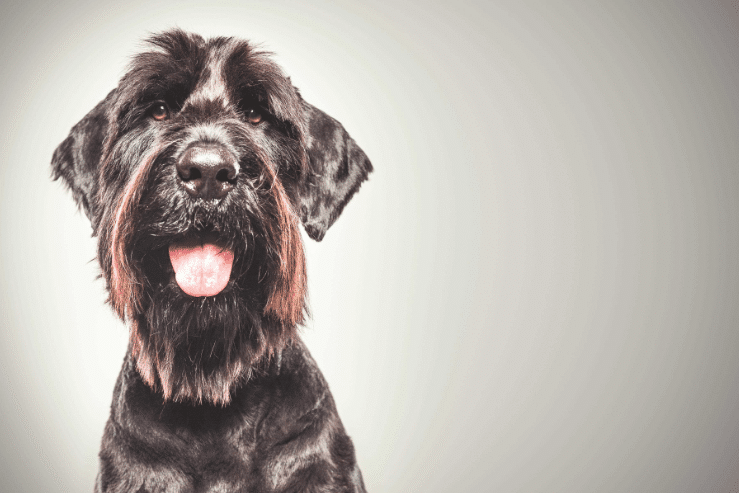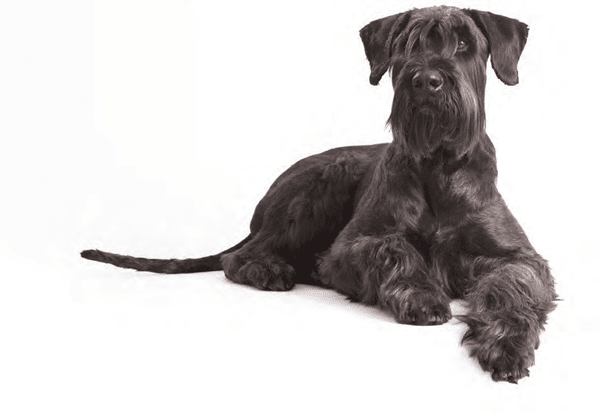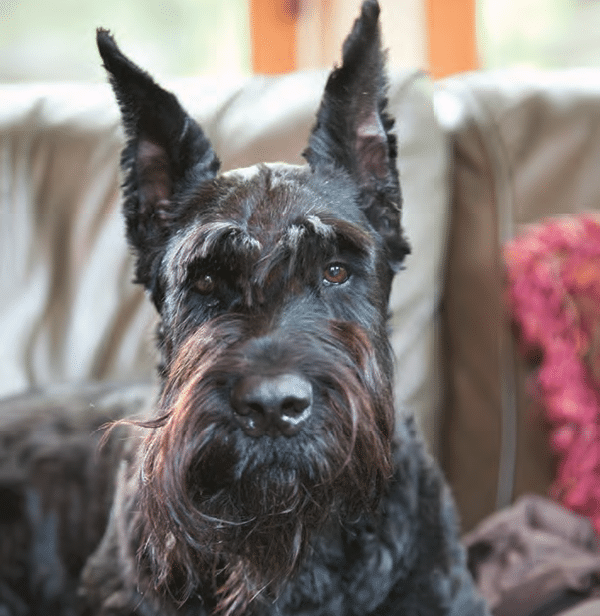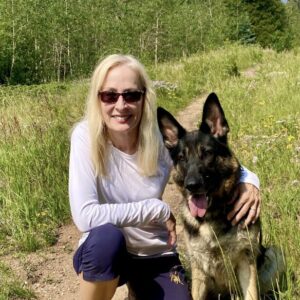Bold and faithful, Giant Schnauzers boasts a remarkable work drive. Although he displays the same trademark beard and eyebrows as his smaller cousins, he’s significantly larger. After all, a Miniature Schnauzer averages 15 pounds, and the Giant Schnauzers weigh some 80 pounds! Along with his size, the Giant is renowned for his extra strength and protectiveness.
A giant in the making
Developed as all-around farm dogs, Schnauzers are recognized for their bristly mustaches and whiskers, as well as their spirit and liveliness. Over time, three distinct breeds were differentiated: the Miniature Schnauzer, the Standard Schnauzer and the Giant Schnauzer.
Giant Schnauzers, a bigger and more powerful version of the Standard Schnauzer, were developed in the Bavarian Alps from several other breeds, possibly Great Danes and German Pinschers. Early predecessors of the Giant drove cattle to market, guarded farms and protected stockyards and factories. The dogs were required to demonstrate both versatility and assertiveness. During the world wars, Europeans used Giants as police and military dogs.

Living large
The Giant was developed with the natural drive to protect; he needs early socialization to help him distinguish friend from foe. He’s often territorial and takes it upon himself to defend family and home. Smart and trainable, the Giant excels in obedience, rally and protection sports, as well as herding.
Giant Schnauzers are slow maturing puppies, and they may be boisterous with small children. Juvenile Giants benefit from training classes and frequent exposure to differing sights, sounds and people. These experiences help them develop the discernment required for true protection when they’re adults.
Giants aren’t usually dog park types. The shenanigans in a dog park are too silly and unstructured for this rather serious breed. Males generally don’t put out the welcome sign for new male dogs. The Giant needs both mental and physical exercise; he’s certainly not a couch potato, and short walks won’t suffice. He displays both a strong work and play drive. Bonding closely with family, Giants thrive with inclusion. They’re courageous and vigorous, an impressive presence when challenged. Although Giants are faithful and friendly with owners, they aren’t typically gregarious with strangers. The Giant’s affection and everlasting loyalty must be earned.

Gigantic DETAILS
Weight: 60 to 85 pounds (male), 55 to 75 pounds (female)
Life span: 12 to 14 years
Coat: The Giant’s weather-resistant double coat has a soft undercoat and a hard, dense, wiry outer coat that stands up from his skin. The undercoat is soft and dense.
Color: The coat is salt-and-pepper, or solid black.
Ears: Cropped or uncropped button ears
Grooming: The Giant must be brushed weekly and clipped (or stripped) regularly to keep the coat healthy. Trimming unruly eyebrows or beards helps prevent his face from disappearing!
Gear: The Giant is a large, robust breed, so strong toys are a must.
Shedding: Giants shed, but not excessively.
Best for: Singles or families with outdoorsy natures and experience with dogs
Possible health issues: Hip dysplasia, eye disease, autoimmune thyroiditis
Thumbnail: ©SusanHSmith | Getty Images
About the author:
Originally an attorney, Lynn Hayner writes about dogs and law, in no particular order. Lynn lives in Waco, Texas, with her family, a rescued cat and her German Shepherd Dog, Anja.






